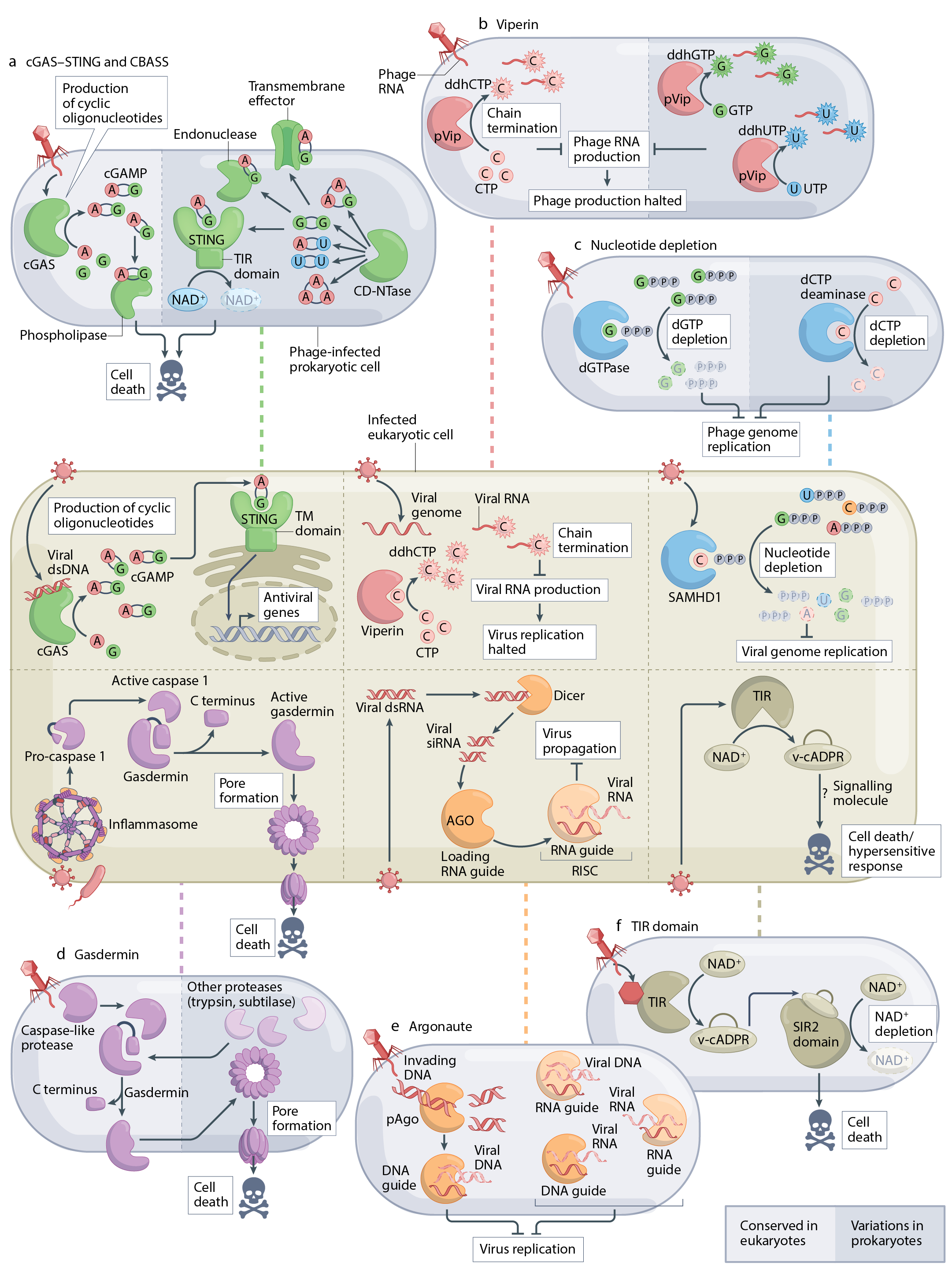Origin of human innate immunity
We discovered that many components of the human cell-autonomous innate immune system evolved from defense systems that protect bacteria from phage infection (Wein, Nature Reviews in Immunology 2022). For example, we showed that the cGAS-STING antiviral pathway, originally discovered in animals, is also widespread in bacteria and protects them against phage infection (Cohen et al, Nature 2019; Millman et al, Nature Microbiology 2020). In addition, we found that genes with Toll-interleukin receptor (TIR) domains are involved in bacterial defense against phages, providing evidence for a common, ancient ancestry of innate immunity components shared between animals, plants, and bacteria (Doron et al, Science 2018; Ofir et al, Nature 2021; Leavitt et al, Nature 2022; Rousset et al, Science 2025). In other studies we showed that viperins, enzymes producing antiviral molecules in humans, evolved from bacterial enzymes that have similar functions (Bernheim et al, Nature 2021), and that a human inflammatory process called Pyroptosis also originated in bacteria (Johnson Science 2022; Wein et al, Nature 2025). Defense systems employing a eukaryotic-like ubiquitin conjugation machinery were also described by our lab (Hör et al, Nature 2024), as well as defense systems that use caspase-like proteins to execute immune-activated cell death in bacteria (Rousset et al, Science 2025).
Our discoveries explain the evolution of the human cell-autonomous innate immune system. In addition to explaining how our immune system evolved, we also showed that understanding mechanisms in bacterial immune systems solves new mechanisms in the animal and plant immune systems (e.g., Ofir et al, Nature 2021;Leavitt et al, Nature 2022; Rousset, Cell 2023).

